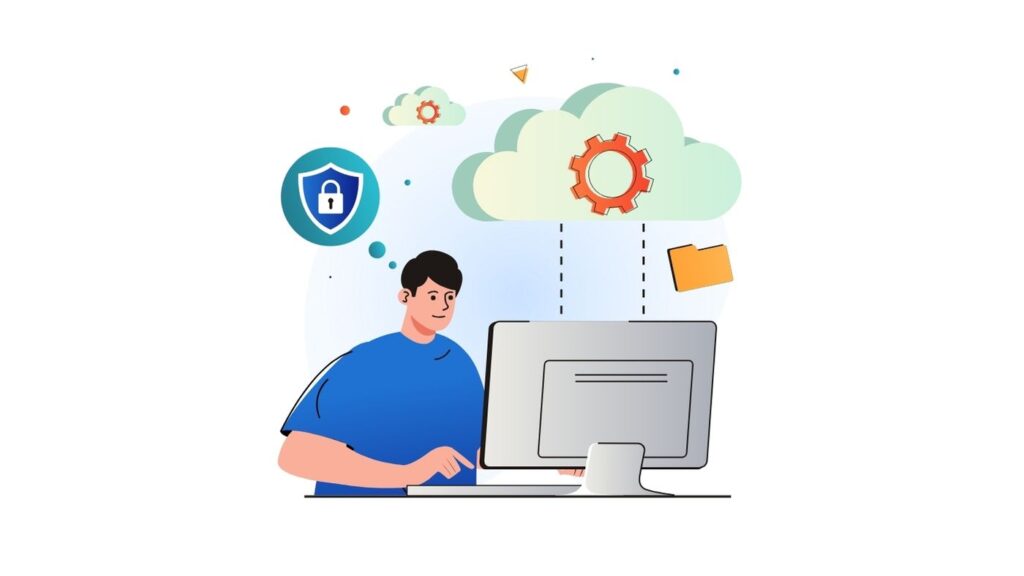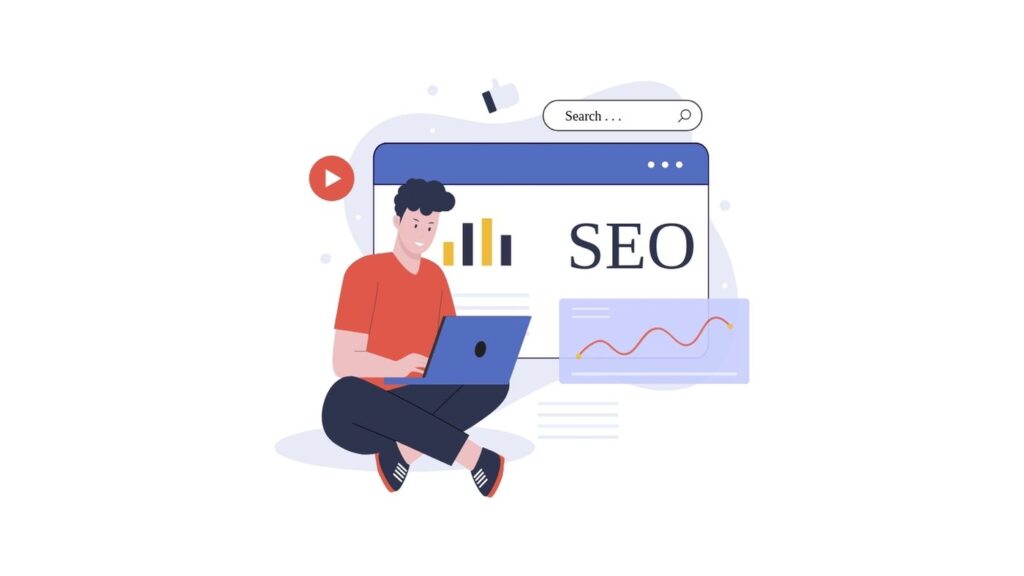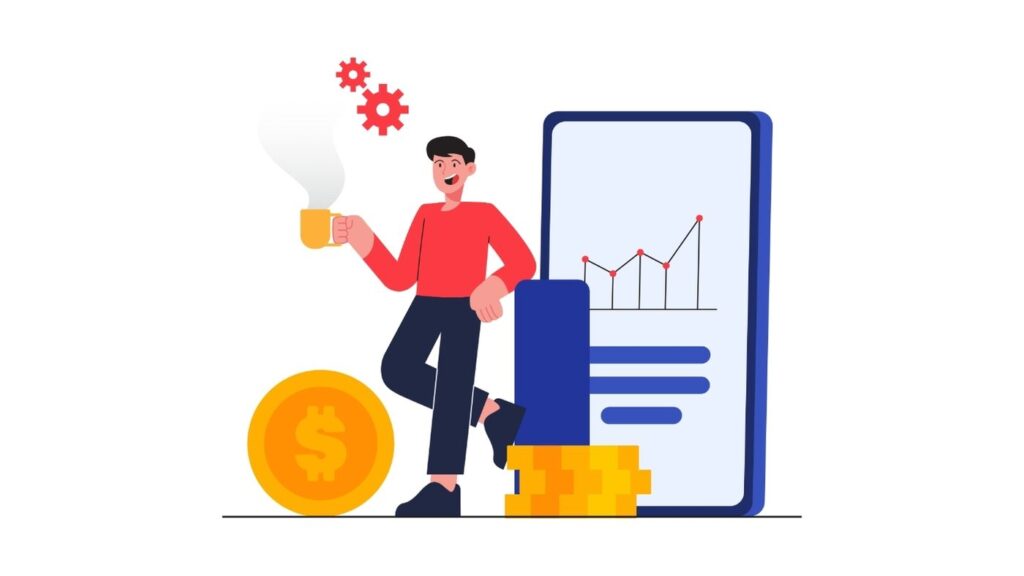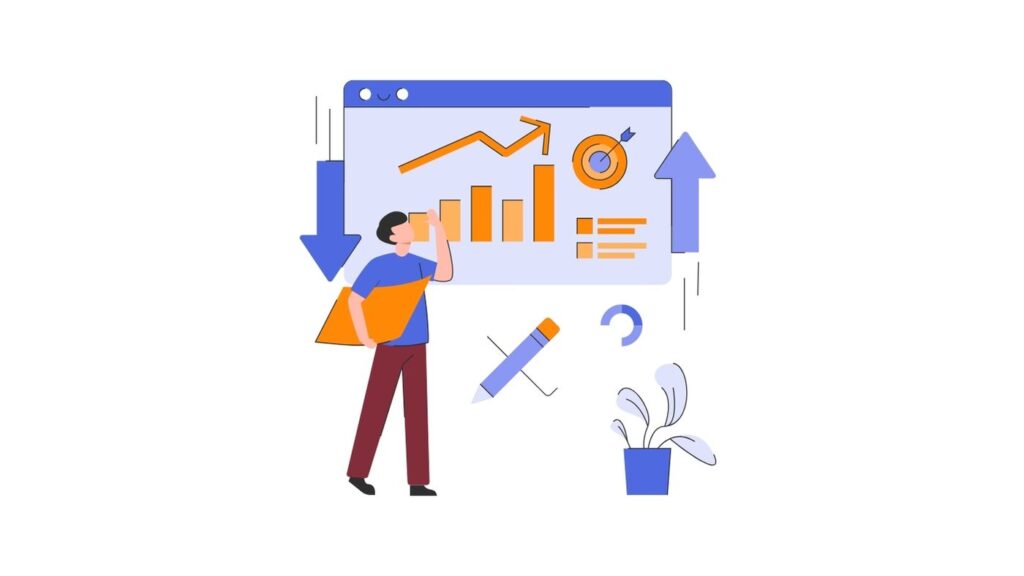Introduction: Blogging In India
If you want to earn Rs.50000/- from Blogging in India, this post is for you only. Blogging has emerged as a lucrative avenue for individuals seeking to earn a substantial income, even in countries like India. With the widespread adoption of the internet and increasing digital literacy, the potential for earning through blogging has never been greater. This introductory section aims to provide a brief overview of the earning potential in the Indian blogging landscape and underscore the significance of selecting the right niche and implementing effective monetization strategies.
The Potential for Earning Through Blogging in India: In recent years, India has witnessed a surge in internet users, with millions of individuals accessing the web for various purposes, including seeking information, entertainment, and shopping. This growing online population presents a vast audience base for bloggers to tap into and monetize. Moreover, the rise of digital marketing and e-commerce has created numerous opportunities for bloggers to collaborate with brands and earn through sponsored content, affiliate marketing, and other monetization channels.
Importance of Choosing the Right Niche: One of the foundational elements of a successful blog is selecting the right niche – a specific topic or subject area that aligns with both the blogger’s interests and the audience’s preferences. Choosing a niche that resonates with the target audience increases the likelihood of attracting and retaining readers, thereby laying the groundwork for monetization. Additionally, focusing on a niche allows bloggers to establish themselves as authoritative figures within their respective domains, fostering trust and credibility among their audience.
Strategies to Monetize a Blog Effectively: While creating compelling content is essential for attracting readers, monetizing a blog requires strategic planning and implementation of various revenue-generating tactics. Common monetization strategies include display advertising, affiliate marketing, sponsored content, and selling digital products or services. By diversifying income streams and exploring multiple monetization avenues, bloggers can maximize their earning potential and mitigate the risks associated with relying on a single revenue source.
In conclusion, the potential for earning Rs.50,000 from blogging in India is substantial, provided bloggers choose the right niche and implement effective monetization strategies. Aspiring bloggers should focus on creating valuable content, building a loyal audience base, and exploring diverse revenue streams to achieve their financial goals through blogging.

Choosing the Right Niche:
Importance of Selecting a Niche Based on Personal Interest, Expertise, and Market Demand: Selecting the right niche for your blog is crucial for long-term success. When choosing a niche, consider topics that genuinely interest you and align with your passions. Blogging about subjects you’re passionate about not only makes the writing process more enjoyable but also helps you stay motivated during challenging times. Furthermore, drawing from your expertise in a particular field can lend credibility to your blog and establish you as an authority within your niche.
However, personal interest and expertise alone may not suffice. It’s just as important to check how much people want what you’re writing about. Conduct thorough research to identify whether there is a sizable audience interested in the topics you plan to cover. Analyze keyword search volume, social media engagement, and online forums to gauge the level of interest and demand within your niche. Choosing a niche with a passionate and engaged audience increases the likelihood of building a loyal readership base and monetizing your blog effectively.
Researching Popular Niches in India and Analyzing Competition: Before finalizing your niche, it’s essential to conduct comprehensive research to understand the landscape of popular niches in India. Start by exploring trending topics and subjects that resonate with the Indian audience. Consider factors such as cultural relevance, current events, and emerging trends that may influence the popularity of certain niches.
Additionally, analyze the competition within your chosen niche. Identify other blogs or websites catering to similar topics and assess their content quality, audience engagement, and monetization strategies. Understanding your competitors’ strengths and weaknesses can help you position your blog uniquely and identify opportunities to differentiate yourself in the market.
Exploring Evergreen Topics with Long-Term Earning Potential: While trends come and go, evergreen topics remain relevant and in demand over time. When selecting a niche for your blog, prioritize topics with long-term earning potential that can withstand fluctuations in market trends. Evergreen topics are timeless and continue to attract readership and engagement regardless of seasonal or cultural changes.
Examples of evergreen niches include personal finance, health and wellness, self-improvement, and lifestyle advice. These topics address fundamental human needs and interests, making them perennially popular among audiences. By focusing on evergreen topics, you can create content that retains its value and relevance over time, allowing you to build a sustainable and profitable blogging business.
In summary, picking the right topic is really important for making your blog successful. By selecting a niche based on personal interest, expertise, and market demand, conducting thorough research on popular niches, analyzing competition, and exploring evergreen topics with long-term earning potential, you can lay the foundation for a profitable and sustainable blogging venture in India.

Setting Up Your Blog:
Choosing a Reliable Hosting Provider and Domain Name: Selecting the right hosting provider is crucial for the performance and reliability of your blog. A reliable hosting provider ensures that your website is accessible to visitors without interruptions and offers sufficient resources to support your growing traffic. When choosing a hosting provider, consider factors such as uptime guarantees, customer support responsiveness, scalability options, and pricing plans that fit your budget.
In addition to choosing a hosting provider, selecting a domain name is equally important. Your domain name is your blog’s unique address on the internet and plays a significant role in branding and search engine optimization (SEO). Choose a domain name that reflects your blog’s niche or content theme, is easy to remember, and preferably includes relevant keywords. Conduct thorough research to ensure that your chosen domain name is available and not trademarked by others.
Selecting a User-Friendly Platform like WordPress: WordPress is a popular and user-friendly platform for building and managing websites, including blogs. It offers a wide range of customizable themes and plugins that allow you to create a unique and professional-looking blog without requiring coding skills. Whether you’re a beginner or an experienced blogger, WordPress provides an intuitive interface that simplifies content creation, publishing, and website management.
One of the big pluses of WordPress is that you can change and grow it however you need. You can start with a basic blog and gradually expand its functionality by adding plugins for additional features such as contact forms, social media integration, e-commerce capabilities, and more. Moreover, WordPress is continuously updated and supported by a large community of developers, ensuring security and performance enhancements over time.
Customizing Your Blog’s Design for a Professional Appearance: A visually appealing and professionally designed blog enhances user experience and credibility, encouraging visitors to stay longer and explore your content. Customize your blog’s design to reflect your brand identity and create a cohesive visual experience for your audience. Choose a clean and modern theme that complements your niche and makes navigation intuitive for users.
Customization options include selecting color schemes, typography, layout structures, and adding custom graphics or branding elements. Pay attention to design elements such as logo placement, menu organization, and readability of text to ensure a polished and professional appearance. Regularly review and update your blog’s design to keep it fresh and aligned with evolving design trends and user preferences.
Emphasizing Mobile Responsiveness for Wider Audience Reach: With the increasing prevalence of mobile devices, ensuring that your blog is mobile-responsive is essential for reaching a wider audience and providing a seamless browsing experience across all devices. A mobile-responsive design automatically adjusts the layout and formatting of your website to fit various screen sizes, including smartphones and tablets.
Google prioritizes mobile-friendly websites in its search rankings, making mobile responsiveness a crucial factor for SEO and organic traffic. By optimizing your blog for mobile devices, you improve user engagement, reduce bounce rates, and enhance overall user satisfaction. Choose a WordPress theme that is inherently mobile-responsive or use plugins and tools to optimize your existing theme for mobile compatibility.
In conclusion, setting up your blog involves several key steps, including choosing a reliable hosting provider and domain name, selecting a user-friendly platform like WordPress, customizing your blog’s design for a professional appearance, and emphasizing mobile responsiveness for wider audience reach. By following these guidelines and investing time and effort into the setup process, you can create a robust and visually appealing blog that attracts and retains visitors effectively.

Creating Quality Content:
Understanding the Importance of High-Quality, Valuable Content for Attracting and Retaining Readers: High-quality content serves as the cornerstone of a successful blog, attracting and retaining readers while establishing credibility and authority within your niche. Quality content provides value to your audience by addressing their needs, answering their questions, or entertaining them. By offering valuable insights, practical advice, or engaging storytelling, you can capture the attention of your audience and keep them coming back for more.
Moreover, high-quality content enhances your blog’s reputation and visibility, increasing the likelihood of social shares, backlinks, and referrals. Whether you’re writing informative articles, creating in-depth guides, or sharing personal anecdotes, prioritize quality over quantity to make a lasting impression on your readers and differentiate your blog from competitors.
Developing a Content Strategy Based on Keyword Research and Audience Interests: A well-defined content strategy is essential for guiding your blogging efforts and ensuring that your content resonates with your target audience. Start by conducting keyword research to identify relevant topics and search queries that align with your blog’s niche and audience interests. Use keyword research tools to discover popular keywords, long-tail phrases, and related topics that have high search volume and low competition.
Once you’ve identified potential topics, prioritize them based on relevance, search demand, and competition levels. Develop a content calendar or editorial plan to organize your content ideas and schedule publication dates. Consider diversifying your content mix to cater to different audience preferences and content formats, including articles, videos, podcasts, infographics, and interactive quizzes.
Incorporating Various Content Formats Such as Articles, Videos, Infographics, etc.: Effective content creation involves leveraging various content formats to engage different audience segments and cater to diverse learning styles. While written articles are a staple of blogging, incorporating multimedia content such as videos, infographics, and podcasts can enhance user experience and broaden your reach.
Videos allow you to convey complex information in a visually compelling format, making it easier for viewers to digest and retain information. Infographics present data and statistics in a visually appealing and shareable format, making them ideal for conveying complex concepts or summarizing key points. Podcasts offer a convenient way for audiences to consume content on-the-go and provide opportunities for in-depth discussions or interviews with industry experts.
By diversifying your content formats, you can appeal to a wider audience and keep them engaged across different platforms and channels. Experiment with different formats to identify what resonates best with your audience and aligns with your content goals and objectives.
Maintaining Consistency in Publishing Schedules to Keep Readers Engaged: Consistency is key to building and maintaining a loyal readership base and ensuring that your blog remains relevant and top-of-mind for your audience. Establish a regular publishing schedule and stick to it to set expectations and encourage repeat visits from your readers. Whether you choose to publish new content daily, weekly, or bi-weekly, consistency is more important than frequency.
Moreover, consistency extends beyond publishing schedules to encompass other aspects of your blogging efforts, including content quality, voice, and branding. Maintain a consistent tone and style across your blog posts to reinforce your brand identity and establish familiarity with your audience. Engage with your readers regularly through comments, social media, and email newsletters to foster a sense of community and connection.
In conclusion, creating quality content is essential for attracting and retaining readers, establishing credibility, and driving engagement on your blog. By understanding the importance of high-quality, valuable content, developing a content strategy based on keyword research and audience interests, incorporating various content formats, and maintaining consistency in publishing schedules, you can effectively grow your blog’s audience and influence over time.

Building a Strong Audience Base:
Utilizing Social Media Platforms to Promote Blog Content and Engage with Followers: Social media platforms offer a powerful avenue for promoting your blog content, reaching new audiences, and engaging with your existing followers. Choose relevant social media channels where your target audience is most active, such as Facebook, Twitter, Instagram, LinkedIn, or Pinterest. Share your blog posts on these platforms, accompanied by captivating captions, eye-catching visuals, and relevant hashtags to increase visibility and engagement.
In addition to sharing your own content, actively engage with your followers by responding to comments, messages, and mentions promptly. Get people talking and sharing by asking questions, getting their thoughts, and sharing what they create. By fostering a sense of community on social media, you can strengthen relationships with your audience and encourage them to become loyal supporters of your blog.
Encouraging User Interaction Through Comments, Shares, and Likes: User interaction is a vital aspect of building a strong audience base and fostering a sense of belonging among your readers. Encourage users to engage with your blog content by inviting them to leave comments, share posts on social media, and like or react to your content. Actively monitor comments on your blog posts and respond thoughtfully to feedback, questions, and suggestions from your audience.
Furthermore, make it easy for readers to share your content by incorporating social sharing buttons on your blog posts and encouraging readers to share interesting articles with their networks. Recognize and appreciate user engagement by highlighting and featuring top contributors, conducting user spotlight interviews, or organizing user appreciation events. By acknowledging and rewarding user interaction, you can cultivate a loyal and engaged audience for your blog.
Collaborating with Other Bloggers and Influencers in Your Niche for Mutual Promotion: Collaborating with other bloggers and influencers in your niche can amplify your reach, increase brand visibility, and attract new followers to your blog. Identify complementary bloggers or influencers with a similar target audience and propose collaboration opportunities such as guest blogging, co-hosting webinars or events, or participating in joint content projects.
When reaching out to potential collaborators, focus on building genuine relationships and offering mutual value. Highlight the benefits of collaboration, such as access to each other’s audience, shared expertise, and increased credibility through association. Collaborative efforts not only expand your reach but also introduce your blog to new audiences who are likely to share similar interests and preferences.
Offering Freebies, Giveaways, or Exclusive Content to Incentivize Subscription: Offering incentives such as freebies, giveaways, or exclusive content is an effective strategy for incentivizing subscriptions and nurturing relationships with your audience. Create valuable resources such as e-books, templates, checklists, or toolkits that address common pain points or provide actionable insights within your niche. Offer these resources as lead magnets in exchange for email subscriptions, encouraging visitors to join your mailing list.
Additionally, organize periodic giveaways or contests on your blog or social media channels to reward loyal followers and attract new subscribers. Partner with brands or sponsors to offer exclusive discounts, product samples, or VIP experiences as prizes, generating excitement and engagement among your audience. By providing valuable incentives, you can incentivize subscriptions and build a dedicated community of subscribers who eagerly anticipate your blog updates and exclusive content.
In conclusion, building a strong audience base requires proactive engagement, strategic collaborations, and value-driven incentives. By utilizing social media platforms to promote blog content and engage with followers, encouraging user interaction through comments, shares, and likes, collaborating with other bloggers and influencers in your niche, and offering freebies, giveaways, or exclusive content to incentivize subscription, you can cultivate a loyal and engaged audience for your blog.

Monetization Strategies:
Exploring Different Monetization Avenues such as Display Advertising, Affiliate Marketing, Sponsored Content, etc.: Monetizing your blog involves exploring various revenue streams beyond traditional methods. One common avenue is display advertising, where you can place ads on your blog and earn revenue based on impressions (CPM) or clicks (CPC). Platforms like Google AdSense and Media.net allow you to display contextual ads that are relevant to your content and audience.
Another lucrative monetization strategy is affiliate marketing, where you promote products or services from other companies and earn a commission for each sale or referral made through your unique affiliate links. Choose affiliate programs that align with your niche and audience interests, and incorporate affiliate links naturally within your content. Websites such as Amazon Associates, ShareASale, and Commission Junction have lots of different affiliate programs for many kinds of businesses.
Sponsored content is another monetization avenue where brands pay you to create and publish content that promotes their products or services. Sponsored content can take various forms, including sponsored blog posts, product reviews, sponsored social media posts, or sponsored videos. When negotiating sponsored content deals, ensure that the brand aligns with your niche and values, and maintain transparency with your audience about sponsored partnerships.
Signing Up for Ad Networks like Google AdSense for Passive Income: Google AdSense is a popular ad network that allows bloggers to earn passive income by displaying contextual ads on their websites. Signing up for Google AdSense is relatively straightforward, and once approved, you can generate an ad code to place on your blog. AdSense uses contextual targeting to display ads relevant to your content and audience, maximizing click-through rates and earnings potential.
To optimize your AdSense earnings, focus on creating high-quality content that attracts targeted traffic and encourages user engagement. Experiment with ad placements, sizes, and formats to find what works best for your blog layout and audience preferences. Additionally, monitor your AdSense dashboard regularly to track performance metrics such as click-through rate (CTR), earnings per click (EPC), and revenue generated, and adjust your strategies accordingly.
Partnering with Relevant Affiliate Programs and Promoting Products/Services through Affiliate Links: Affiliate marketing is a versatile monetization strategy that allows you to earn commissions by promoting products or services from other companies. Research and join relevant affiliate programs that align with your blog’s niche and audience interests. Choose products or services that you genuinely believe in and would recommend to your audience, as authenticity and trust are crucial for successful affiliate marketing.
Integrate affiliate links seamlessly within your blog content, such as within product reviews, comparison guides, or recommended product lists. Disclose your affiliate relationships transparently to your audience to maintain trust and credibility. Additionally, track your affiliate performance using analytics tools provided by affiliate networks or third-party tracking platforms to identify top-performing products, optimize your promotional strategies, and maximize earnings.
Negotiating Sponsored Content Deals with Brands Relevant to Your Niche: Sponsored content offers bloggers the opportunity to collaborate with brands and monetize their influence and expertise. When negotiating sponsored content deals, focus on partnering with brands that align with your niche, values, and audience preferences. Conduct thorough research on potential brand partners to ensure compatibility and relevance.
When pitching sponsored content opportunities to brands, highlight the value proposition of your blog, including your audience demographics, engagement metrics, and past successful collaborations. Clearly outline deliverables, such as content format, publishing schedule, and promotion channels, as well as your compensation expectations. Negotiate terms that are fair and mutually beneficial, considering factors such as content exclusivity, licensing rights, and payment terms.
In conclusion, monetizing your blog involves exploring various revenue streams, including display advertising, affiliate marketing, sponsored content, and more. By diversifying your monetization strategies and leveraging platforms like Google AdSense, affiliate networks, and sponsored content partnerships, you can generate passive income, maximize earnings potential, and turn your blog into a profitable venture.

Optimizing for Search Engines:
Implementing Basic SEO Techniques such as Keyword Optimization, Meta Tags, and Internal Linking: Search engine optimization (SEO) is essential for improving your blog’s visibility and ranking in search engine results pages (SERPs). Begin by finding the words and phrases that your audience uses when they search online. Incorporate these keywords naturally into your blog posts, titles, headings, and image alt tags to improve your chances of ranking for relevant search queries.
In addition to keyword optimization, optimize your meta tags, including meta titles and descriptions, to entice users to click through to your blog from search results. Meta titles should accurately reflect the content of your blog post and include targeted keywords, while meta descriptions should provide a concise summary of what readers can expect. Writing compelling meta tags can improve click-through rates and drive organic traffic to your blog.
Furthermore, implement internal linking strategies to improve site structure and navigation while distributing link equity throughout your blog. Link relevant pages and posts together using descriptive anchor text to help search engines understand the relationships between different pieces of content on your site. Internal linking also encourages users to explore more of your content, reducing bounce rates and increasing time spent on your blog.
Creating Compelling Meta Titles and Descriptions to Improve Click-Through Rates: Meta titles and descriptions play a crucial role in attracting clicks from search engine users and influencing their decision to visit your blog. Craft compelling and descriptive meta titles that accurately summarize the content of your blog posts while incorporating relevant keywords. Keep meta titles concise, typically under 60 characters, to ensure they display properly in search results and grab users’ attention.
Similarly, write compelling meta descriptions that provide additional context and entice users to click through to your blog. Use persuasive language, highlight unique selling points, and address users’ search intent to increase click-through rates. While meta descriptions don’t directly impact search rankings, they can significantly impact organic traffic by influencing user behavior.
Optimizing Site Speed and Mobile-Friendliness for Better Search Engine Rankings: Site speed and mobile-friendliness are crucial ranking factors that can significantly impact your blog’s visibility and user experience. Optimize your blog’s loading speed by minimizing file sizes, leveraging browser caching, and enabling compression techniques. Use tools like Google PageSpeed Insights or GTmetrix to identify performance bottlenecks and implement optimizations accordingly.
Additionally, ensure that your blog is mobile-responsive and provides a seamless user experience across devices of all screen sizes. Google prioritizes mobile-friendly websites in its search rankings, so optimizing for mobile is essential for maintaining or improving your search visibility. Test your blog’s mobile-friendliness using Google’s Mobile-Friendly Test tool and address any issues that may arise, such as text readability, button size, and mobile viewport configuration.
Monitoring Analytics Data to Track Performance and Make Necessary Adjustments: Regularly monitor analytics data to gain insights into your blog’s performance, user behavior, and search engine rankings. Use tools like Google Analytics to track key metrics such as organic traffic, bounce rate, average session duration, and conversion rates. Analyze which keywords are driving traffic to your blog, which pages are performing well, and where there may be opportunities for improvement.
Additionally, leverage search engine tools like Google Search Console to monitor your blog’s search performance, identify indexing issues, and receive alerts about potential SEO issues. Monitor changes in search rankings, impressions, and click-through rates over time, and make necessary adjustments to your SEO strategies accordingly. Experiment with different tactics, measure their impact, and refine your approach based on data-driven insights to continuously improve your blog’s search visibility and performance.
In conclusion, optimizing your blog for search engines involves implementing basic SEO techniques such as keyword optimization, meta tags, and internal linking, creating compelling meta titles and descriptions, optimizing site speed and mobile-friendliness, and monitoring analytics data to track performance and make necessary adjustments. By prioritizing SEO best practices and continuously optimizing your blog for search engines, you can increase your visibility, attract more organic traffic, and achieve better search engine rankings over time.

Diversifying Income Streams:
Exploring Additional Revenue Streams beyond Traditional Blogging, such as Online Courses, E-books, Consulting Services, etc.: While traditional blogging offers various monetization opportunities, diversifying your income streams can provide additional revenue have different ways to make money so you’re not only relying on one thing. Explore alternative revenue streams such as creating and selling online courses, and e-books, or offering consulting services within your niche.
Online courses allow you to leverage your expertise and knowledge to create comprehensive educational materials that cater to specific audience needs or pain points. Platforms like Teachable, Udemy, or Skillshare provide tools and resources to create, market, and sell online courses to a global audience. Identify topics or subjects within your niche that align with your expertise and audience interests, and create high-quality course content that delivers tangible value and actionable insights.
Similarly, consider writing and publishing e-books that offer in-depth guides, tutorials, or resources related to your blog’s niche. E-books can be sold directly through your blog or through online marketplaces like Amazon Kindle Direct Publishing (KDP). Leverage your blog’s existing audience and promotional channels to market and promote your e-books effectively.
Additionally, explore opportunities to offer consulting services or coaching sessions based on your expertise and niche specialization. Whether it’s providing one-on-one guidance, conducting workshops, or offering personalized advice, consulting services can be a lucrative income stream that capitalizes on your unique skills and knowledge.
Leveraging Email Marketing to Promote Products/Services and Nurture Customer Relationships: Email marketing is a powerful tool for promoting products or services, nurturing customer relationships, and driving revenue for your blog. Build and grow your email list by offering valuable incentives such as lead magnets, freebies, or exclusive content in exchange for email subscriptions. Use email marketing platforms like Mailchimp, ConvertKit, or Constant Contact to manage your email campaigns and automate communication with subscribers.
Segment your email list based on audience demographics, interests, or purchase behavior to deliver targeted and personalized content that resonates with different subscriber segments. Use email sequences, newsletters, and promotional campaigns to promote products, announce new releases, or share exclusive offers with your subscribers.
Focus on providing value-driven content and building trust with your email subscribers by delivering relevant and engaging content that addresses their needs and interests. Encourage interaction and feedback from subscribers by including calls-to-action, surveys, or feedback forms in your emails. By nurturing relationships through email marketing, you can increase customer loyalty, drive repeat purchases, and generate additional revenue for your blog.
Investing in Passive Income Streams like Digital Products or Membership Sites: Passive income streams offer the opportunity to generate recurring revenue with minimal ongoing effort or maintenance. Consider creating and selling digital products such as templates, printables, software tools, or stock photography that cater to your audience’s needs or interests. Once created, digital products can be sold repeatedly without the need for ongoing production or fulfillment.
Another passive income opportunity is to launch a membership site or subscription-based service that offers exclusive content, resources, or community access to members in exchange for a recurring fee. Membership sites provide a steady stream of income and foster a sense of community among your audience, encouraging long-term engagement and loyalty.
When investing in passive income streams, focus on creating high-quality products or services that provide genuine value and address specific pain points or aspirations of your audience. Market your digital products or membership site through your blog, social media channels, and email marketing to attract subscribers and generate sales. Continuously refine and expand your offerings based on customer feedback and market demand to maximize the profitability and sustainability of your passive income streams.
In conclusion, diversifying your income streams beyond traditional blogging offers opportunities to increase revenue, reduce reliance on a single income source, and create long-term financial stability. By exploring additional revenue streams such as online courses, e-books, consulting services, leveraging email marketing to promote products/services and nurture customer relationships, and investing in passive income streams like digital products or membership sites, you can expand your earning potential and build a sustainable income from your blog.

Consistency and Persistence:
Emphasizing the Importance of Patience and Persistence in the Journey of Blogging: Blogging is not a get-rich-quick scheme; it’s a long-term commitment that requires patience and persistence to see results. Emphasize to aspiring bloggers the importance of staying committed to their blogging journey, even when progress seems slow or setbacks occur. Building a successful blog takes time, effort, and perseverance, and success rarely happens overnight.
Encourage bloggers to stay focused on their goals and maintain consistency in their efforts, even during periods of doubt or uncertainty. Remind them that every small step forward contributes to their overall progress, and that success is often the result of consistent, sustained effort over time. By adopting a mindset of patience and persistence, bloggers can navigate the inevitable challenges and setbacks of the blogging journey with resilience and determination.
Setting Realistic Goals and Milestones to Track Progress: Setting realistic goals and milestones is essential for maintaining motivation and measuring progress in blogging. Encourage bloggers to define clear, achievable goals that align with their long-term vision for their blog. Whether it’s increasing traffic, growing email subscribers, or monetizing their blog, goals should be specific, measurable, and time-bound to provide clarity and focus.
Break down larger goals into smaller, actionable milestones that can be achieved incrementally. Celebrate each milestone reached, no matter how small, to maintain momentum and motivation. Regularly review and adjust goals as needed based on changing circumstances, priorities, and feedback from analytics data or audience engagement.
Learning from Failures and Adapting Strategies Accordingly: Failure is an inevitable part of the blogging journey, but it’s also an opportunity for growth and learning. Encourage bloggers to embrace failure as a natural and necessary part of the learning process, rather than a reflection of their worth or abilities. Instead of dwelling on setbacks or mistakes, encourage them to analyze what went wrong, identify lessons learned, and use that knowledge to improve their strategies moving forward.
Encourage a growth mindset that views challenges as opportunities for growth and innovation. Encourage bloggers to experiment with different approaches, tactics, and strategies, and to be open to feedback and constructive criticism. By viewing failures as valuable learning experiences and adapting their strategies accordingly, bloggers can become more resilient, resourceful, and ultimately successful in their blogging endeavors.
Staying Updated with Industry Trends and Continuously Improving Skills: The blogging landscape is constantly evolving, with new technologies, trends, and best practices emerging regularly. Encourage bloggers to stay informed and up-to-date with industry trends, developments, and changes in algorithms or policies that may impact their blogging efforts. Follow industry publications, blogs, podcasts, and social media channels to stay informed about the latest news, insights, and strategies in the blogging world.
Encourage continuous learning and skill development to stay competitive and relevant in a rapidly changing environment. Invest time in learning new tools, techniques, and strategies for content creation, SEO, social media marketing, and monetization. Attend webinars, workshops, or conferences, and participate in online courses or communities to expand knowledge, network with peers, and stay inspired and motivated in their blogging journey.
In conclusion, consistency and persistence are key traits for success in blogging. By emphasizing the importance of patience and persistence, setting realistic goals and milestones, learning from failures, adapting strategies accordingly, and staying updated with industry trends and continuously improving skills, bloggers can navigate the challenges of the blogging journey with resilience, determination, and ultimately achieve their goals.
Conclusion:
Summarizing Key Points Discussed in the Article: In this article, we’ve explored the various aspects of earning Rs.50,000 from blogging in India. We began by discussing the importance of choosing the right niche based on personal interest, expertise, and market demand. We then delved into setting up a blog, emphasizing the selection of a reliable hosting provider, a user-friendly platform like WordPress, and customization for a professional appearance.
Next, we covered creating quality content, highlighting the significance of high-quality, valuable content, developing a content strategy, and incorporating various formats to keep readers engaged. We also discussed building a strong audience base through social media promotion, user interaction, collaborations, and offering incentives for subscriptions.
Furthermore, we explored monetization strategies beyond traditional blogging, including display advertising, affiliate marketing, sponsored content, and diversifying income streams through online courses, e-books, consulting services, email marketing, and passive income streams.
Emphasizing the Importance of Taking Action and Starting Their Blogging Journey: Now that you have a comprehensive understanding of the strategies and techniques involved in earning Rs.50,000 from blogging in India, it’s time to take action and embark on your blogging journey. Remember that success in blogging requires dedication, persistence, and a strategic approach. Don’t be afraid to start small and gradually scale up as you gain experience and confidence in your abilities.
Starting a blog is not only a lucrative income opportunity but also a creative outlet for expressing your passion, expertise, and unique perspective. Whether you’re looking to supplement your income, pursue your passion, or build a thriving online business, blogging offers endless possibilities for growth and fulfillment.
Reiterating the Potential for Earning Rs.50,000 from Blogging in India with Dedication and a Strategic Approach: While earning Rs.50,000 from blogging in India may seem ambitious, it’s entirely achievable with dedication, perseverance, and a strategic approach. By following the principles and strategies outlined in this article, you can create a profitable and sustainable blogging business that generates consistent income over time.
Remember that success in blogging is not guaranteed overnight, but with patience, persistence, and a willingness to learn and adapt, you can overcome challenges and achieve your goals. Stay focused on providing value to your audience, building genuine connections, and continuously refining your strategies to stay ahead in the competitive blogging landscape.
In conclusion, the potential for earning Rs.50,000 from blogging in India is within reach for those who are willing to put in the effort and follow a strategic approach. Start your blogging journey today, and unleash your creativity, passion, and entrepreneurial spirit to create a successful and fulfilling online presence.




